Spring

The farm woodlands burst into colour with wildflowers in bloom: the bright whites of snowdrops and wood anemones, the rich yellows of lesser celandines and the vivid blues of violets and bluebells all carpeting the woodland floor.
Spring migrant birds begin to return from their African wintering grounds with chiffchaffs, sand martins and wheatears (the first to arrive on the Island from mid-March onwards) and there is always the chance of an osprey passing northwards.
Just as the leaves of oaks, birches and hazels unfurl, songbirds begin to proclaim their territories. The dawn chorus reverberates through the trees, hedgerows and across the meadows with the beautiful melody of blackcaps, the fluting phrases of thrushes, the explosive song of Cetti's warblers and the rapid drumming of woodpeckers. Overhead the towering trills of skylarks fill the air and buzzards and kestrels swoop and circle in aerial courtship displays

Early butterflies are on the wing, a symbol of spring arrival: the orange-tip, the original `butter-coloured fly', the brimstone, the flashing `eyes' of the peacock and the multi-coloured small tortoiseshell. Bumblebee queens are abuzz, on the search for suitable nesting holes to start new colonies and other emerging insects include the large red damselfly and black-tailed skimmer dragonfly, seen hawking over still-water pools and ditches.
After a winter lull, red squirrels are increasingly active in spring as they take advantage of the new shoots and flowers as a rich food source. The Isle of Wight is an important refuge for this declining, yet hugely popular and iconic British mammal and with around 3,000 individuals present, it is the last stronghold in the whole of the south of England. The woodlands around the Garlic Farm are one of the best sites on the island for close sightings of red squirrels and out on the fields, brown hares may be seen in their famous spring `boxing' behaviour.
Summer

The magnificent meadows of the Garlic Farm are now a kaleidoscope of colour, with poppies, cornflowers and ox-eye daisies in breath-taking bloom. Many butterflies are attracted in from the surrounding downlands to feed on the flower nectar, including marbled whites with their distinctive black and white markings, stunning chalk hills and common blues. Exotic looking orchids bring further colour to the fields and woodlands: common spotted, southern marsh and bee orchids are at their finest in the summer sun.
The bird breeding season is in full swing. The hedgerows hold yellowhammers, whitethroats and linnets, their distinctive songs carrying far on the gentle summer breezes and there may even be a chance to glimpse rare turtle doves. Swallows and martins hawk for insects on the wing, hobbies dash by in pursuit of dragonflies and kingfishers dart across the ponds

Emperor and golden-ringed dragonflies hunt above pools and along woodland rides. In the canopy, other insect woodland specialists flutter gracefully among the leaves, such as white admirals, silver-washed fritillaries and speckled woods butterflies.
As dusk descends, barn owls and long-eared owls take to the wing and other nocturnal birds may be seen or heard including the most beautiful of songsters, the nightingale and the `churring' and wing-clapping display of nightjars.
Autumn

This is the best time of the year to see red squirrels as they busily search for food, such as hazelnuts, sweet chestnuts and pine seeds to store in secret `caches' in the ground in readiness for the leaner months ahead.
The hedgerows and thickets of the Garlic Farm are brimming with berries and fruits, providing food for a rich array of wildlife. Birds migrating in from northern Europe such as fieldfares, redwings and bramblings take advantage of the natural autumn harvest. Familiar late-flying butterflies, red admirals and painted ladies, alight on windfall apples and under the cover of darkness, badgers and foxes feast on low hanging fruit, whilst the shy and elusive dormice are attracted to succulent blackberries.
After a successful breeding season, family groups of birds are often seen together, especially mistle thrushes, green woodpeckers and long-tailed tits. Larks, sparrows, finches and buntings begin to gather around the fields of wild bird cover crops and many other species of birds pass through the island on their migration south; the farm providing a welcome stop-over for flycatchers, redstarts and a wide variety of warblers.
Many colourful insects are still on the wing, migrant hawker and common darter dragonflies share the air with speckled wood, comma and gatekeeper butterflies.
Winter

The colder conditions bring many species of birds together, often forming large flocks in search of food and providing some safety in numbers. The finch flocks on the farm can reach into the hundreds, with linnets, greenfinches, goldfinches and chaffinches feeding on the cover crop seeds on the fields and roosting in the nearby hedgerows, the bouncing flight of the mixed flocks seen from afar. They are often joined by skylarks, house sparrows, yellowhammers and reed buntings and sometimes family groups of stonechats move in from the downlands.
Movements of geese are pronounced at dawn and dusk as resident Canada and greylag geese fly from nearby roosting ponds to surrounding fields and dark-bellied brent geese, having bred in Arctic Siberia and migrated to southern England, fly in large skeins between the coast and inland grazing pastures on the Isle of Wight.
Such an abundance of birds does not go unnoticed by visitors and guests staying at the Garlic Farm, but also draws the attention of birds of prey, with sparrowhawk seen on a daily basis, the occasional agile-winged merlin and the presence of the fastest flying bird in the world, the peregrine falcon, which can reach speeds of up to 200 mph in a hunting plunge, known as a stoop. Wintering hen harriers and short-eared owls may put in an appearance during daylight hours and at night, Little Owls and Barn Owls quarter the fields for rodents, using their acute sense of hearing to locate their prey.

Red squirrels regularly visit their food caches and with the shortening days, mammals such as badgers, foxes and hedgehogs are more often seen as the early dusk descends.
Even in winter, wildflowers brighten the landscape, with the dusky pink of winter heliotropes, purple crocuses and the vivid white drifts of snowdrops, harbingers of the vibrancy of the spring to come.
















